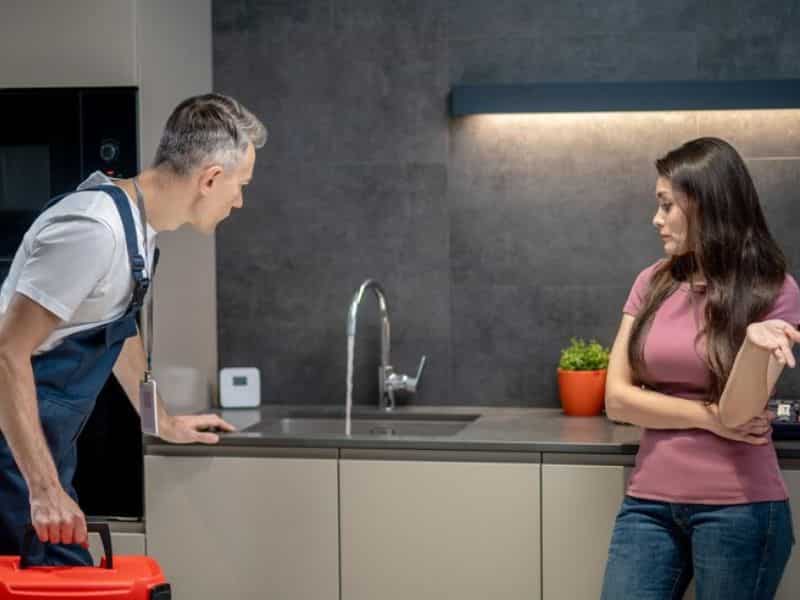Just how do you feel with regards to What to Know About Plumbing: Basics, Tips, and Insights?

Plumbing is an important facet of any type of home, in charge of supplying clean water for alcohol consumption, cooking, and bathing, in addition to getting rid of wastewater securely. Comprehending the basics of home plumbing is essential for each house owner to make sure proper upkeep, troubleshooting, and, if required, repairs. In this beginner's overview, we'll cover the fundamental principles of home plumbing to assist you become extra familiar with just how it works.
Water Supply System
The water system system brings clean water right into your home from a metropolitan water resource or a private well. It consists of a primary water line that connects to your home's plumbing system, typically situated underground. A water meter gauges the amount of water consumed, while a shut-off valve permits you to control the circulation of water into your home.
Plumbing Fixtures
Plumbing components are devices that supply water to various parts of your home and consist of sinks, taps, commodes, showers, bath tubs, and home appliances such as dishwashers and washing makers. Each fixture is attached to the water supply system using pipelines and installations and might have its shut-off shutoff for upkeep or emergency situations.
Water Furnace
The water furnace is responsible for heating water for residential use, consisting of bathing, cooking, and cleansing. Typical types of hot water heater consist of tank-type hot water heater, tankless (on-demand) hot water heater, and heatpump water heaters. The hot water heater is connected to the water system system and delivers warm water to plumbing components as needed.
Drain System
The drain system removes wastewater from your home and lugs it away to a sewage treatment facility or septic tank. It consists of a network of pipelines, installations, and fixtures that transport wastewater from plumbing components to the main drain line or septic system. Proper drainage is necessary to prevent obstructions, back-ups, and sewage leaks.
Air flow System
The ventilation system helps preserve appropriate air pressure and protect against sewer gases from entering your home. Air vent pipelines, additionally called air vent stacks, expand from plumbing components to the roofing, enabling drain gases to run away safely outside. Air flow pipelines also enable air to enter the drain system, helping with smooth wastewater flow and protecting against suction or vacuum cleaner impacts.
Common Plumbing Devices
Having the right devices handy is important for performing fundamental plumbing repair services and maintenance jobs. Common plumbing tools include flexible wrenches, pipe wrenches, pliers, pipeline cutters, hacksaws, bettors, augers (or drainpipe serpents), and Teflon tape. Having these tools conveniently offered can help you deal with minor plumbing concerns effectively.
Fundamental Plumbing Repair Work
While some plumbing repairs might require expert help, several usual problems can be attended to with basic do it yourself methods. Learning exactly how to take care of a leaking faucet, unclog a drainpipe, replace a bathroom flapper, or repair a dripping showerhead can save you time and money on plumbing fixings.
Final thought
Comprehending the fundamentals of home plumbing is crucial for each home owner to maintain a risk-free, practical, and reliable plumbing system. By acquainting on your own with the water supply system, plumbing fixtures, water drainage system, air flow system, usual plumbing tools, and fundamental repair work, you can confidently deal with minor plumbing concerns and ensure your home's plumbing system runs efficiently.
Understanding Basics of Home Plumbing System: A Beginner's Guide
The Main Components of Your Home Plumbing System
The Water Supply System
This system is responsible for transporting fresh water into your home. It usually has a main water line that splits into two branches: one directed towards cold water services and the other connected to a water heater for hot water. The pressure is key here; it ensures water reaches all parts of your house.
The Drainage System
Once water has been used, it becomes wastewater that needs to be removed from your home. This is where the drainage system comes into play. It includes all the pipes that carry wastewater and sewage away from your house to sewage treatment facilities or septic tanks.
The Vent System
The vent system prevents sewer gases from entering your home and helps maintain the pressure balance that allows wastewater to flow out properly. These vents usually exit through the roof of your house.
Water Heating System
For those who enjoy hot showers or using hot water for cleaning, the water heater is a crucial part of the plumbing system. It can be a tankless system, which heats water on demand, or a traditional water tank model.
Common Plumbing Problems and Basic Troubleshooting
Plumbing systems, while designed to be durable, can face issues like clogged drains, leaky faucets, or low water pressure. Here are some basic troubleshooting tips:
Clogged Drains
Use a plunger or a plumber's snake to try and dislodge whatever is blocking the drain. Regular cleaning can prevent clogs.
Leaky Faucets
Often caused by worn-out washers or gaskets, these can usually be replaced by someone with basic DIY skills.
Low Water Pressure
This might be due to sediment build-up in your fixtures or a leak somewhere in your water line. Cleaning out aerators or seeking a professional to detect leaks might be necessary.
Preventive Maintenance Tips
Maintaining your plumbing system is key to avoiding emergencies. Regularly check for leaks, avoid disposing of grease down the sink, and have your system inspected by a professional plumber at least once a year.

I recently found that article about How Does the Plumbing Work in Your Home? while doing research the internet. Remember to set aside a second to promote this post if you liked it. Thanks a lot for taking the time to read it.
Visit